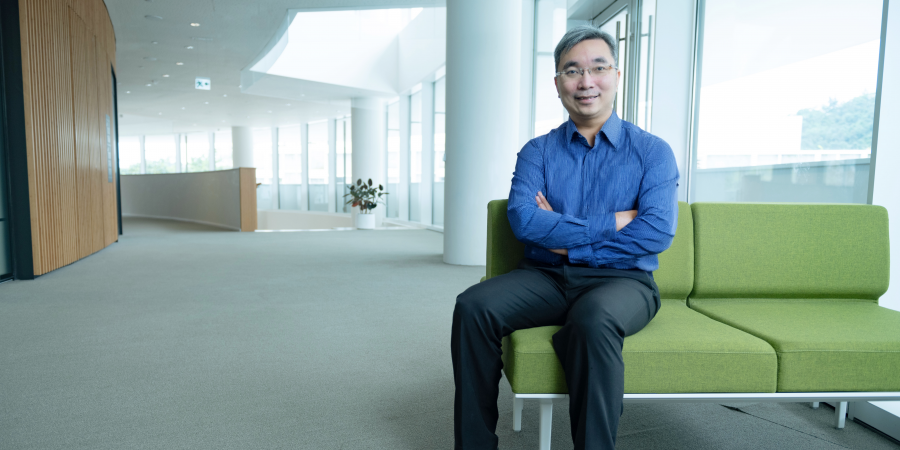The Educator Who Demonstrated that Different Abilities Equal Better Science
Prof. WOO Kam-Tim’s innovative approach to robotics education proves that ability or background need not be barriers to STEAM learning. With the right environment and mindset, everyone can shine.
The journey began in November 2013 when Prof. Woo Kam-Tim from the School of Engineering (SENG) was invited by Ebenezer School & Home for the Visually Impaired to give a talk on science and robotics – a fascinating topic that the students had never had a chance to explore firsthand.
The sound of science
Knowing that conventional PowerPoint slides filled with diagrams and notes would be ineffective, Prof. Woo, Director of Center for Global & Community Engagement (GCE) at SENG, collaborated with his HKUST students to reimagine and redesign the experience. They brought motors into the classroom and placed them in air, on the ground, and in water, asking his audience: “What differences do you hear?”
The students’ heightened hearing picked up nuances that sighted individuals might miss entirely. When they touched the robot components, their tactile sensitivity revealed details others would overlook. What seemed like a disadvantage suddenly became a superpower.
“The magical moment happened after the lecture,” Prof. Woo recalls. A student raised his hand and asked, “Professor, can you take us to a robot competition?” The professor’s immediate thought: “Why not?”
Testing commitment
Despite their teacher’s initial scepticism about how long the students’ commitment would last, all 10 students’ determination did not fade after months – and the group even gained an eleventh member as time went by. By the time when the competition deadline was near and the decision to participate had to be made, the teacher approached Prof. Woo again to reaffirm the students’ will to join, and Prof. Woo – who had been working behind the scenes to determine how to help the students – replied “I am ready.”
To prepare them, Prof. Woo and his team designed an intensive yet accessible workshop where the students could master the essential skills and successfully build their own robots in just two and a half hours – barely longer than the two hours typically needed by students without special needs.
Fair competition, no compromises
In the lead-up to the competition, Prof. Woo made one crucial demand to the organizers: no special accommodations. “They wanted to be treated fairly,” he explains. “No special treatment, no modified rules. They wanted to compete on exactly the same terms as everyone else.”
The results exceeded everyone’s expectations. Against all odds, these first-time competitors secured second place – a stunning achievement that proved inclusion isn’t about lowering standards, but recognizing untapped potential.
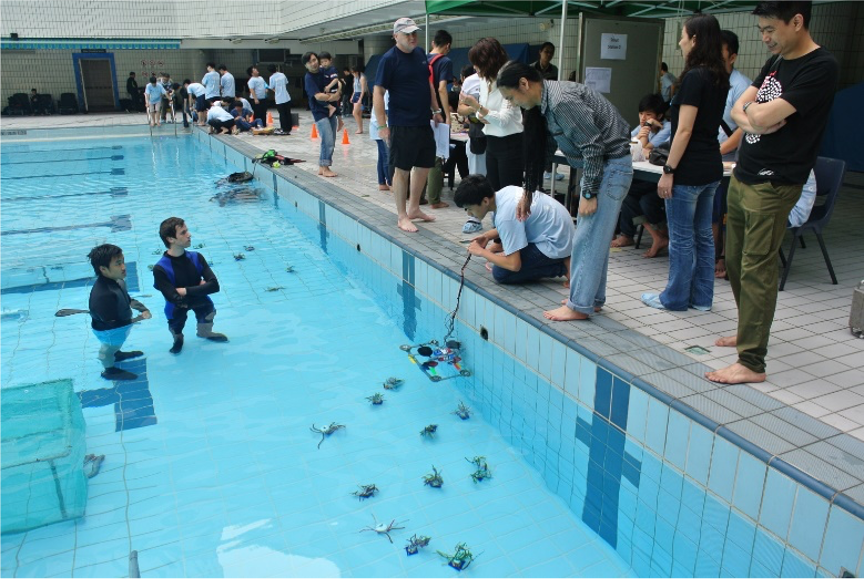
Students from Ebenezer School & Home for the Visually Impaired controlling robots at the poolside during the underwater robot competition in April 2014, where they ultimately achieved an impressive second place.
Communities in motion
The success attracted media attention and numerous requests from other organizations in September 2014. But Prof. Woo took an unexpected direction. “Instead of trying to fit into existing competitions, why not create our own that embraces inclusion from the ground up?” he reasoned.
This decision led to the birth of the HKUST Underwater Robot Competition in 2015, with a unique iSTEAM approach – where the “i” stands for Inclusion alongside Science, Technology, Engineering, Arts and Mathematics.
“Team formation emphasizes diversity,” Prof. Woo explains. “Students with special education needs, from grassroots families, ethnic minorities, different grades and genders – we want to show that everyone can excel together.”
Making complex simple
Underwater robotics might sound daunting, yet Prof. Woo’s team has made it all manageable, even for beginners. “We simplify the process by eliminating the complex elements, leaving only four fundamental principles of underwater robotics – Buoyancy, Motion (Power), Waterproofing and Center of Gravity – that any student can grasp in less than an hour of learning. Once they understand these principles, they will be able to build their robots and participate in the competition,” Prof. Woo explained.
The learning process is not one-way but reciprocal. Through serving as helpers to guide participants in the competition, students of the HKUST Robotics Team and STEAM Tutor Team learned to communicate with participants of different backgrounds and abilities and foster an inclusive mindset. Prof. Woo also invited the participants’ teachers to provide training to the HKUST students, equipping them with the skills to better connect with the participants.
With the guidance of the HKUST students, participants assemble underwater robots from provided components, then guide the robots through various tasks: collecting toy sea creatures from the pool bottom, navigating obstacles, and completing precision manoeuvres. The 2025 competition introduced a new element, requiring teams to find clues from different missions to solve math puzzles at the end of each round. This ensures that every member can contribute, not only those who control the robots, while also testing their communication, strategy and collaboration skills.
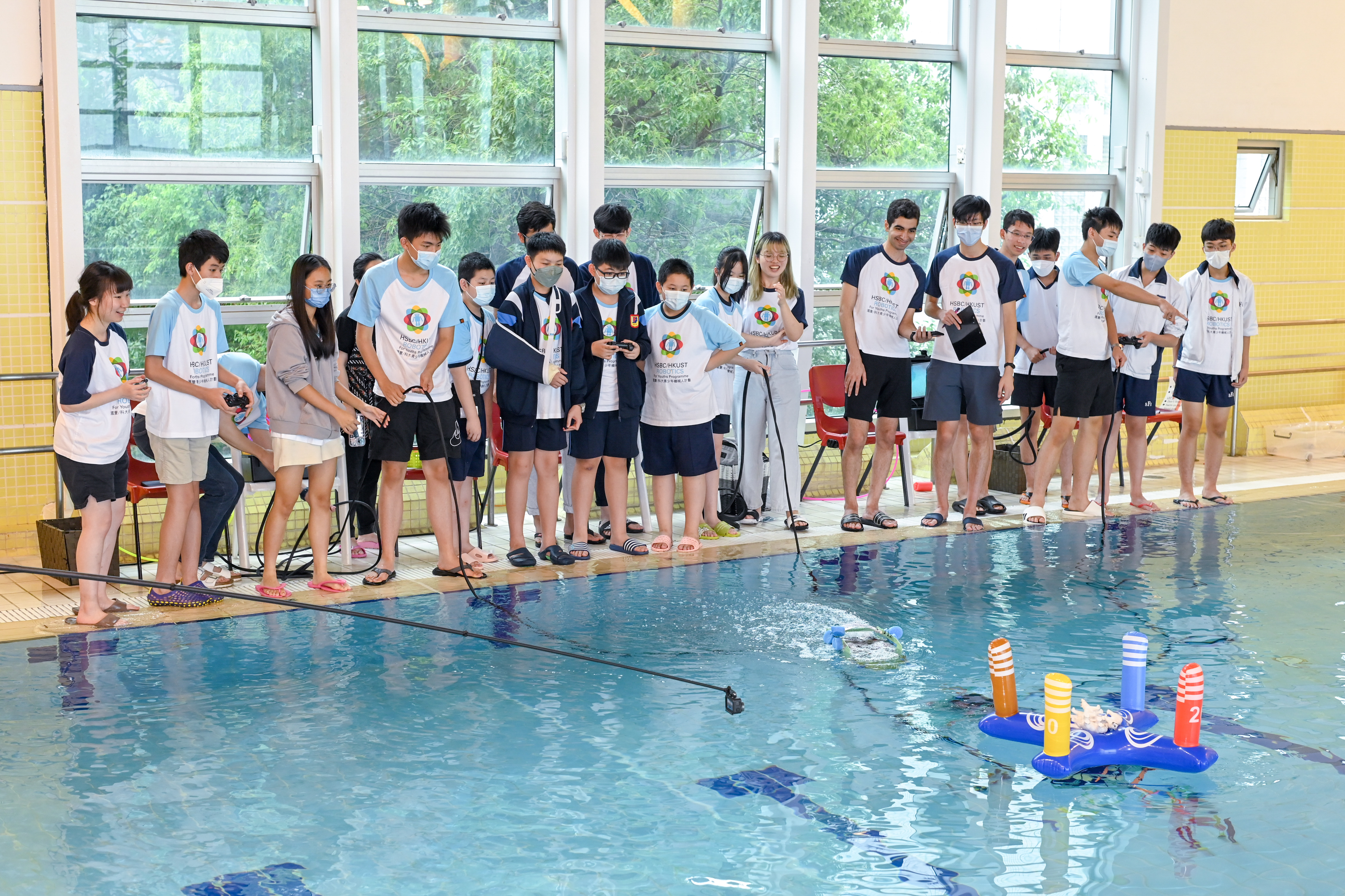
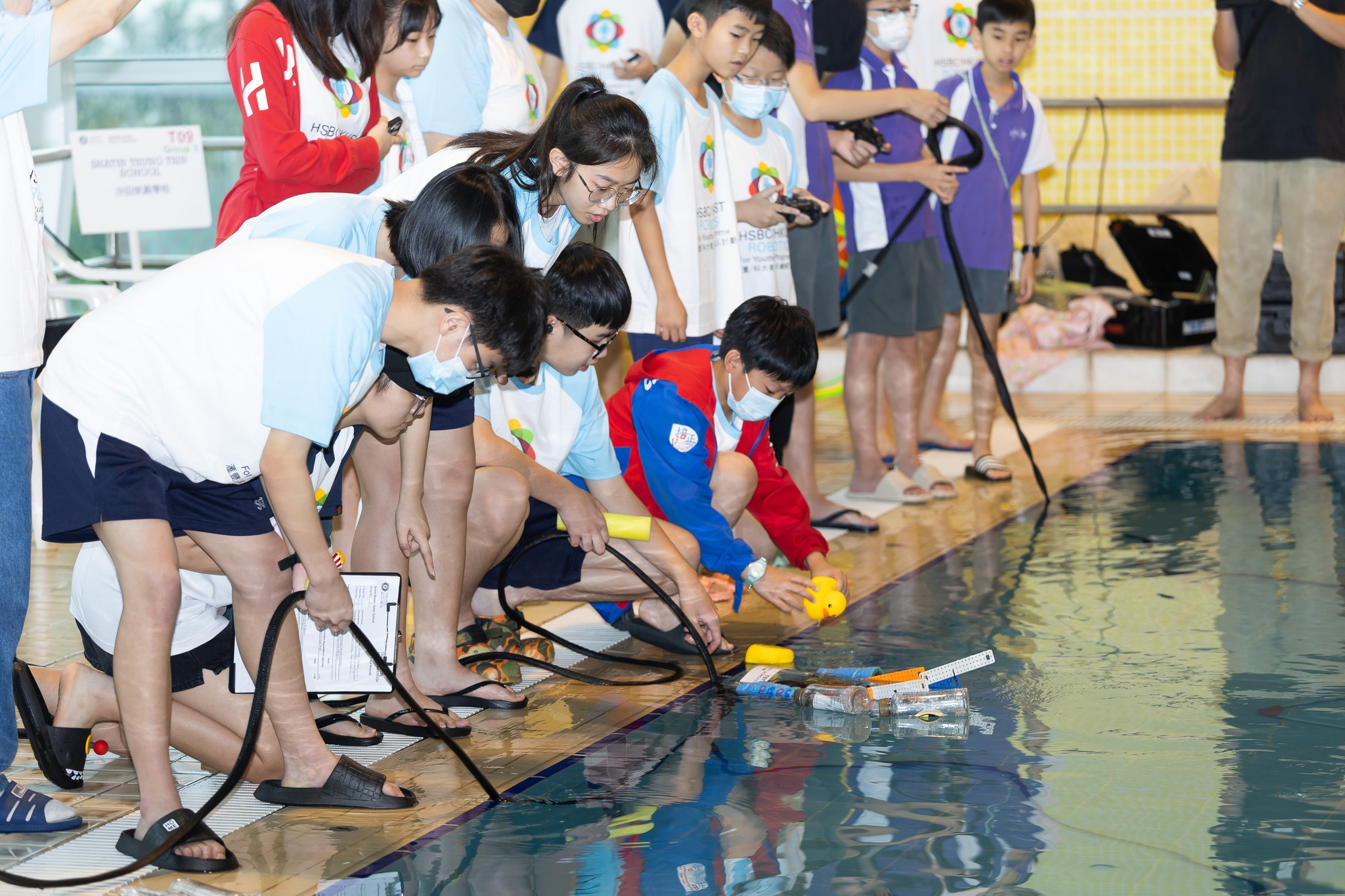
Participants guide the robots through various tasks: collecting toy sea creatures from the pool bottom, navigating obstacles, and completing precision manoeuvres.
One principle remains unchanged: Prof. Woo’s insistence on equality over accommodation. “We’ve had hearing-impaired students win championships, participants with mobility challenges come out on top, and primary school children beat older competitors,” says Prof. Woo. “The results demonstrate that with the right approach, anyone can be a winner.”
A decade of impact
Now in its 10th year, the HKUST Underwater Robot Competition spans an impressive cumulative reach: over 250 university mentors leading more than 5,500 students.
The decade-long competition, together with a wide spectrum of STEAM initiatives that GCE runs in the community, have been instrumental in fostering a passion for STEAM fields. Among these is the STEAM Day, a popular outreach event featuring lab tours, DIY workshops, project demonstrations and game booths, covering robotics, game development, digital art, VR/AR, science, life science and music to inspire primary and secondary students.
“Students need hands-on experience before choosing their subjects,” Prof. Woo explains. “That’s why we organize all these activities to let students explore different STEAM interests. They may or may not choose these subjects after they experienced the activities, but having the exposure to make an informed decision is essential.”
Embracing our AI future
As we enter the AI generation, curiosity and creativity become more important than ever. Prof. Woo believes that fostering these qualities through inclusive STEAM education will help people not just cope with technological change, but truly excel.
“AI is a data system that isn’t naturally creative, but creativity is what drives innovation,” says Prof. Woo. “True STEAM education isn't about mastering complex equations or memorizing formulas – it’s about curiosity, collaboration, and community – qualities that are key to our iSTEAM initiative.”
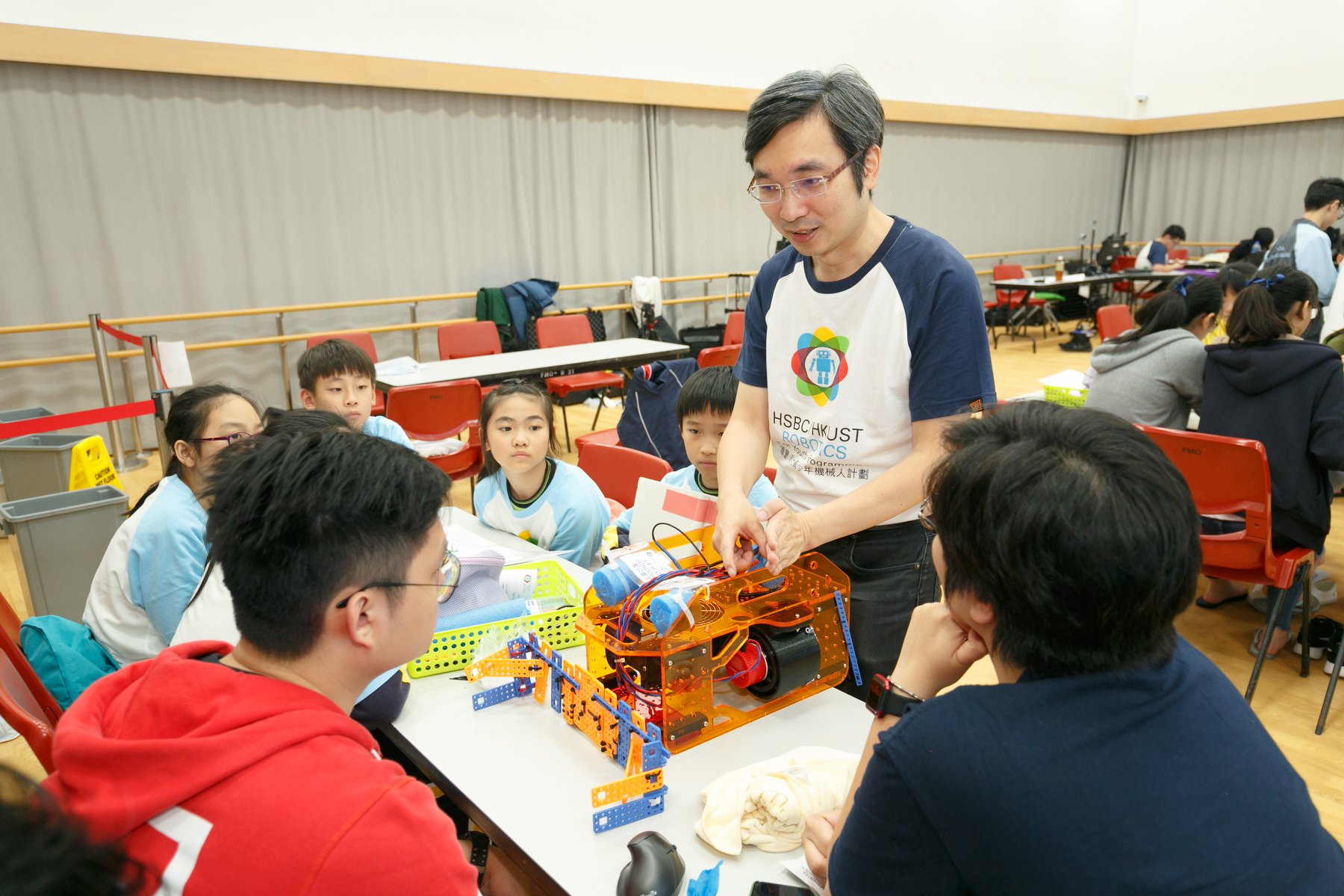
Prof. Tim Woo believes true STEAM education isn’t about mastering complex equations or memorizing formulas – it’s about curiosity, collaboration, and community – qualities that are key to GCE’s iSTEAM initiative.
The ripple effect
Prof. Woo’s approach offers a model for inclusive education: make technology accessible, embrace diverse perspectives, and never underestimate human potential. His mission has created countless “aha!” moments, proving that inclusion isn't just morally right – it’s scientifically brilliant.
The next time you see young people playing with robots, remember the professor who proved that in the deep waters of learning, everyone can swim.
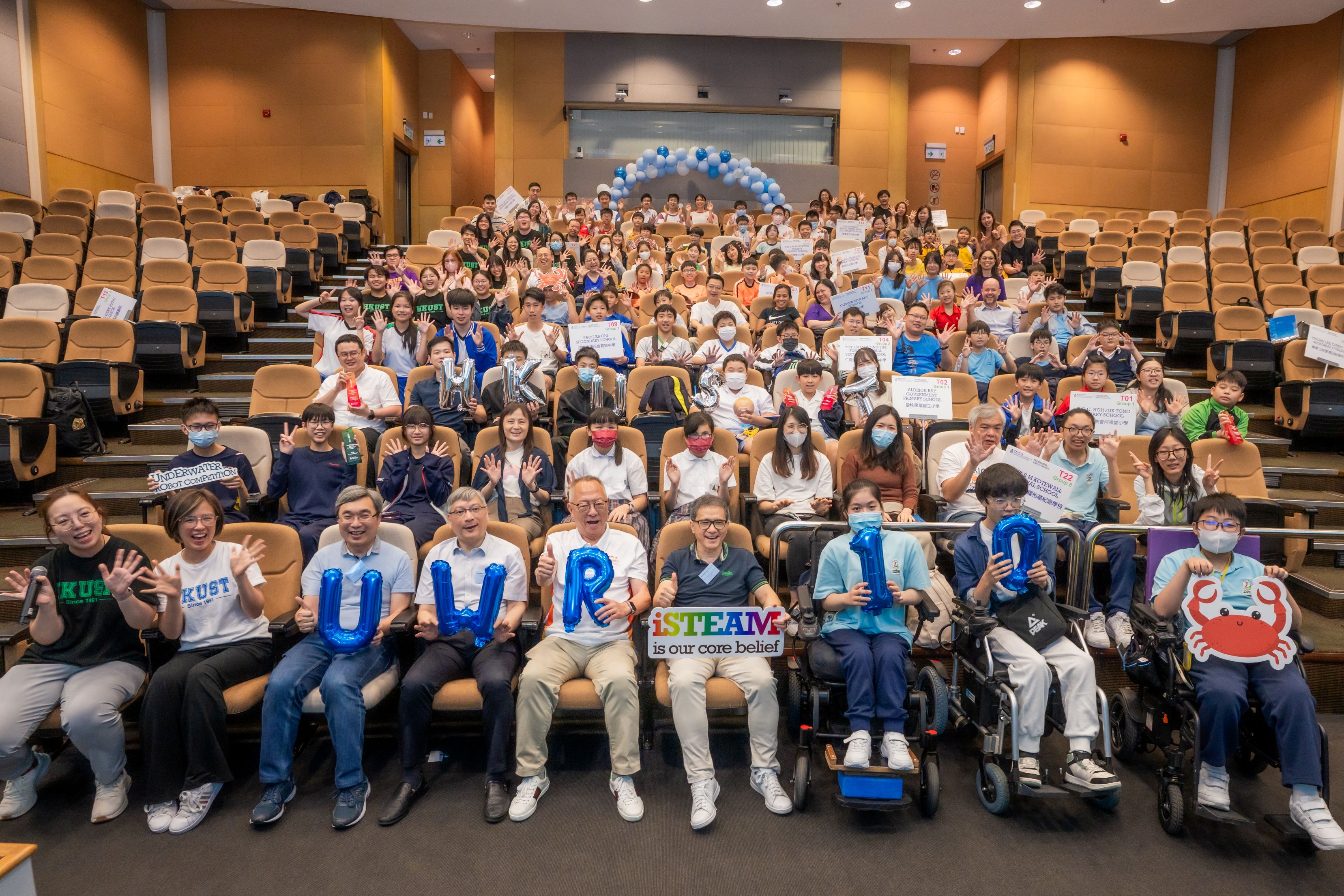
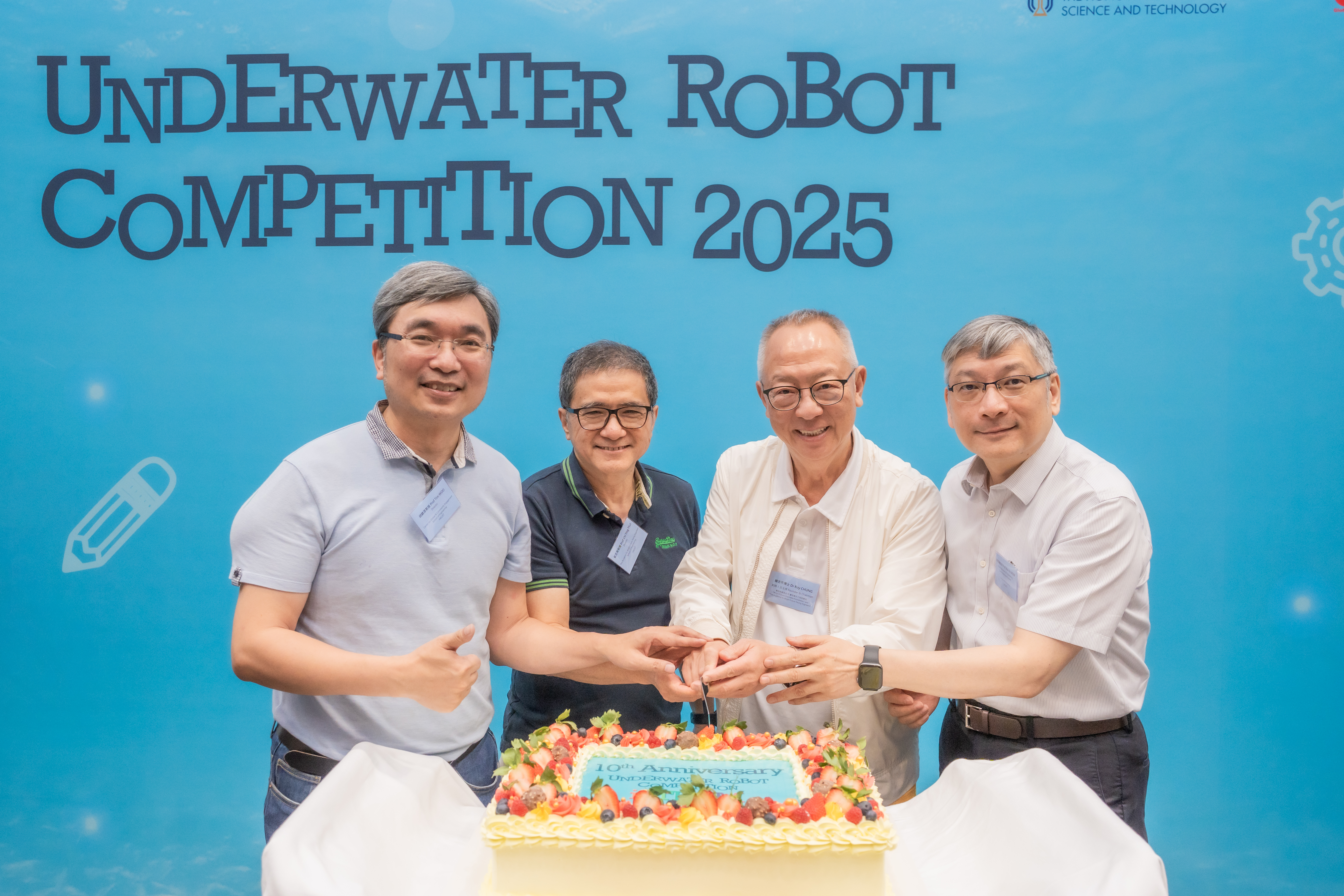
Launched in 2015, the HKUST Underwater Robot Competition reached its 10th anniversary this year. A celebration was held at the 2025 competition’s award presentation ceremony on May 10, 2025.
Related link:

